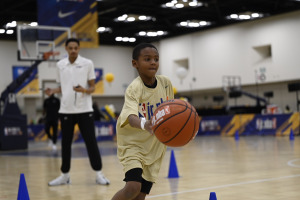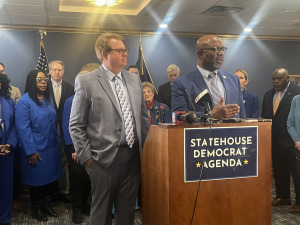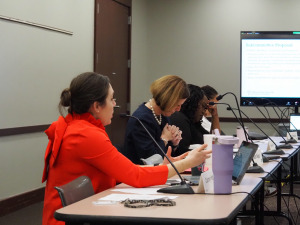
Latest report on the well-being of Hoosier youth gives Indiana a mixed report card
The 146-page Indiana Kids Count Data Book ranked Indiana 27th in the country for overall child well-being.

The 146-page Indiana Kids Count Data Book ranked Indiana 27th in the country for overall child well-being.

The bill would allow single-owner child care companies or nonprofits, like YMCAs, to open multiple locations under one license.

Broadly speaking, the $4.22 billion in untapped economic potential falls into two categories: workplace disruptions—such as worker absenteeism and employee turnover—and lost tax dollars from unearned wages.

Indiana’s campaign finance laws generally bar candidates and their campaigns from spending contributions for “primarily personal” purposes, but do say candidates can use funds to “defray any expense reasonably related” to campaigning or service in elected office.

More employers are taking it upon themselves to help workers find child care, a costly service that can be elusive for working Hoosier parents. A new state fund might be able to help.

Indiana is among a growing number of Republican-led states proposing legislative solutions to tackle the availability and affordability of child care.

Senate Republicans on Monday pushed the Legislature’s latest effort to improve child care access for Hoosier families closer to the finish line. But Democrats say the bill loosens regulations for providers and could put children at risk.

But while the Senate passed its bill—a priority for the Republican caucus—with almost the full support of the chamber, the House version faced adversity from Democrats.

Indiana Statehouse Democrats from both the Senate and House came together Thursday afternoon to release a bicameral agenda, which they said underlined their commitment to big-ticket issues even in a short session.

Indiana lawmakers expect to file and advance significant child care legislation during the upcoming session, after years of advocacy from Hoosier parents, child care providers and worker-strapped businesses.

The new set of standards would evaluate child care centers around the state and be rolled out over three years starting in 2024.

Twenty-one early education providers throughout Indiana—and potentially more—will expand their child care offerings with the grants.

There was no comprehensive effort to address Indiana’s child-care and early-learning shortages this legislative session, but a series of smaller changes will have big impacts on Hoosier families.
After more than two years of navigating the pandemic much like their K-12 counterparts, directors of child care facilities are hoping parents will take advantage of the new vaccines to protect their children and those around them.
Indiana and 23 other states filed the suit to stop rules that require students as young as 2 years old to wear masks if they attend a preschool program funded by Head Start.
The absence of reliable and affordable child care limits which jobs people can accept, makes it harder to climb the corporate ladder and ultimately restricts the ability of the broader economy to grow.
The numbers are staggering: The child-care services industry is still down 126,700 workers—more than a 10 percent decline from pre-pandemic levels, Labor Department data shows.
Hoosier families on average face limited access to child care — with most residents having a tough time finding quality care that meets their family’s needs, according to Early Learning Indiana.
It is up to the state to get relief into the hands of those who need it most.

Questions remain about how the coronavirus affects children, how safe the programs are for children and their families, and which procedures work best to mitigate the spread of the virus and its disease, COVID-19.